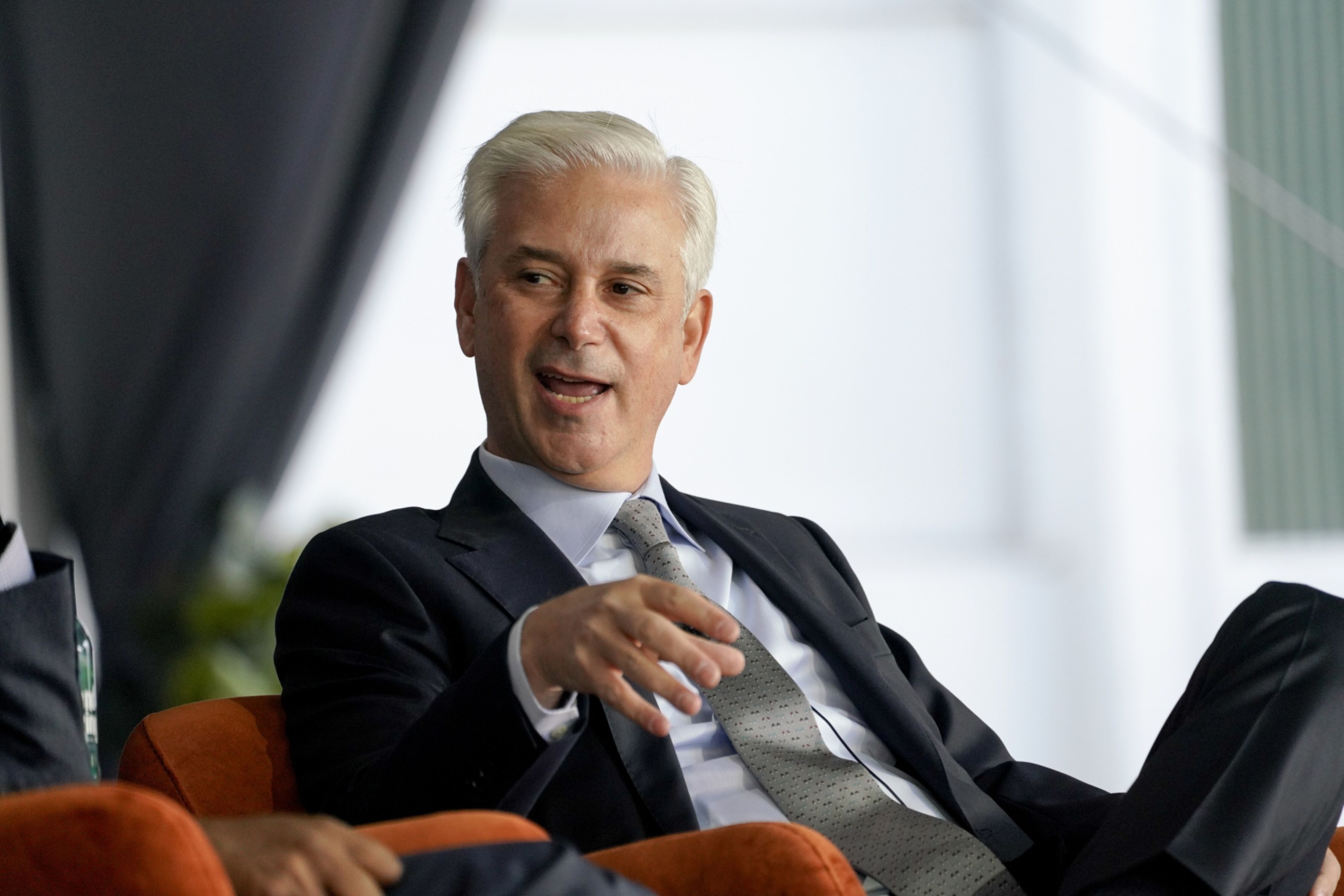
UPDATE: This article includes new details from Wells Fargo’s earnings call and an interview with an analyst.
After a decade in regulatory limbo,
CEO Charlie Scharf, who’s run the bank since October 2019, indicated on Wednesday that he isn’t ready to turn the page. The bank remains shackled under a regulatory asset cap that prohibits it from growing past $1.95 trillion in assets, at least for now.
But he nonetheless flagged progress in repairing
Investors applauded the apparent turnaround on both fronts, driving its stock up 7% on Wednesday after the bank reported fourth-quarter earnings.
Shareholders seem to be showing an “embrace of
RBC Capital Markets analyst Gerard Cassidy was also optimistic, querying executives on
Scharf validated some of that optimism, telling analysts he feels “really great about the prospects” to improve the business. But he also cautioned that executives aren’t letting up on the vast amounts of spending they need to do to fix their regulatory issues.
“We don’t want to get ahead of ourselves,” Scharf said.
Chatter about the bank’s plans to go on offense are a reversal from Scharf’s early days at the company when regulatory issues dominated, said Kyle Sanders, an analyst at Edward Jones.
“We’re talking about revenue growth again. We’re talking about growing market share,” Sanders told American Banker. “We’re talking about being on the front foot, which is something we haven’t been able to say in a long time.”
The company’s profits soared 47% in the fourth quarter of 2024 compared with last year, as dealmaking and wealth management fees helped offset weaker net interest income. Fees from investment banking jumped 59% from last year, showing further progress in Scharf’s attempts to make the once-sluggish group a better competitor to heavyweights like JPMorgan Chase or Citigroup.
Another Scharf priority — remaking the company’s credit card business — showed signs of progress and helped offset weaker growth in
Higher loans could boost the bank’s net interest income, which fell 9% in 2024 from 2023 as rising deposit costs collided with sluggish loan balances. The pressure appears to be easing, with
Fee income helped offset that pressure last quarter, as the bank raked in some $8.5 billion in noninterest income, up 11% from last year. In addition to the investment banking rebound, higher stock prices helped drive some of the strength, as
Chief Financial Officer Michael Santomassimo said he sees opportunities to make Wells a more efficient company and likened it to “peeling an onion.”
“As you look at the next layer down, you find more efficiency,” Santomassimo said. “You bring better technology, you bring better automation, which, by the way, saves us money, but also in a lot of cases, improves the client experience for our customers.”
Lower expenses have pushed up
“Congratulations, we’re in the last mile to the 15%,” Morgan Stanley analyst Betsy Graseck told executives before asking what steps the company could take to get there.
Santomassimo highlighted better profitability from its overhauled credit card business as one factor, as well as improving returns on home lending.
The company’s growth in investment banking and wealth management — two areas that boosted its quarterly earnings — are another option.
“There’s lots of different combinations that get you there,” Santomassimo said. “And that’s why we feel very confident that we’ll get to that 15%.”
One dampener on its growth remains the asset cap that the Federal Reserve imposed in 2018, and though investors hope it gets lifted soon, executives have long declined to speculate on the timing. They did so again Wednesday, saying their focus is ensuring the bank’s overhauls can be sustained and meet regulators’ targets.
But Scharf did note the “important milestone” Wells crossed after the Office of the Comptroller of the Currency lifted a 2016 consent order on the bank. The order related to the aggressive sales practices that helped get
Fixing its sales practices to the OCC’s satisfaction paved the way for Wells to start implementing a new incentive system for branch staffers last year, Santomassimo told analysts.
He said the new system, which Wells piloted on a small subset of branches, includes an overhauled risk framework that ensures “the problems of the past don’t reoccur.”
